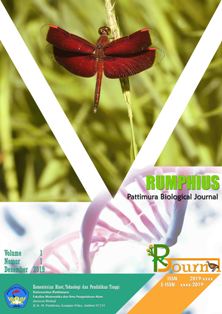POTENTIAL OF HOTONG (Setaria italica (L.) P. Beauv) FROM BURU ISLAND, INDONESIAN, MALUKU PROVINCE AS A FLOUR-BASED FOOD
Abstract
Hotong (Setaria italica (L.) P. Beauv) is a type of food plant that is used by the people of Buru Island, Maluku. The hotong is a plant whose contents are similar to the rice plant. Hotong seeds have quite high nutritional content, namely containing 11.18% protein, 2.36% fat, 73.36% carbohydrates, 11.78% water, and 1.32% ash. The energy produced per 100 grams of hotong seeds is 359 calories. Hotong plants can be used as an alternative commodity in a carbohydrate-produced food diversification program. Various local carbohydrate source commodities can be produced into flour to substitute wheat needs, save the country's foreign exchange and increase food security. Based on the availability of raw materials and prices, hotong has the most potential to be processed into flour. Hotong research results are the most numerous among carbohydrate source commodities. Until now, the name has not been able to be utilized by the public, compared to rice and wheat. This is one consideration that hotong flour can improve the image and interest of users. Hotong flour, with various technological variants, can be used for various flour-based food products, but nationally the real impact on reducing wheat consumption is still not significant. Therefore, it is necessary to discuss the prospects and potential for its use in the food industry.
Downloads
Authors who propose a manuscript and have it approved for publication know that the manuscript will be registered and become part of the RPBJ. Authors and readers understand that this journal is open and all its contents can be accessed freely, provided that RPBJ is still listed as the source of information. The hope is that this journal can become a vehicle for exchange and scientific knowledge for society and the scientific community, especially in the field of Biology and other branches of science.









